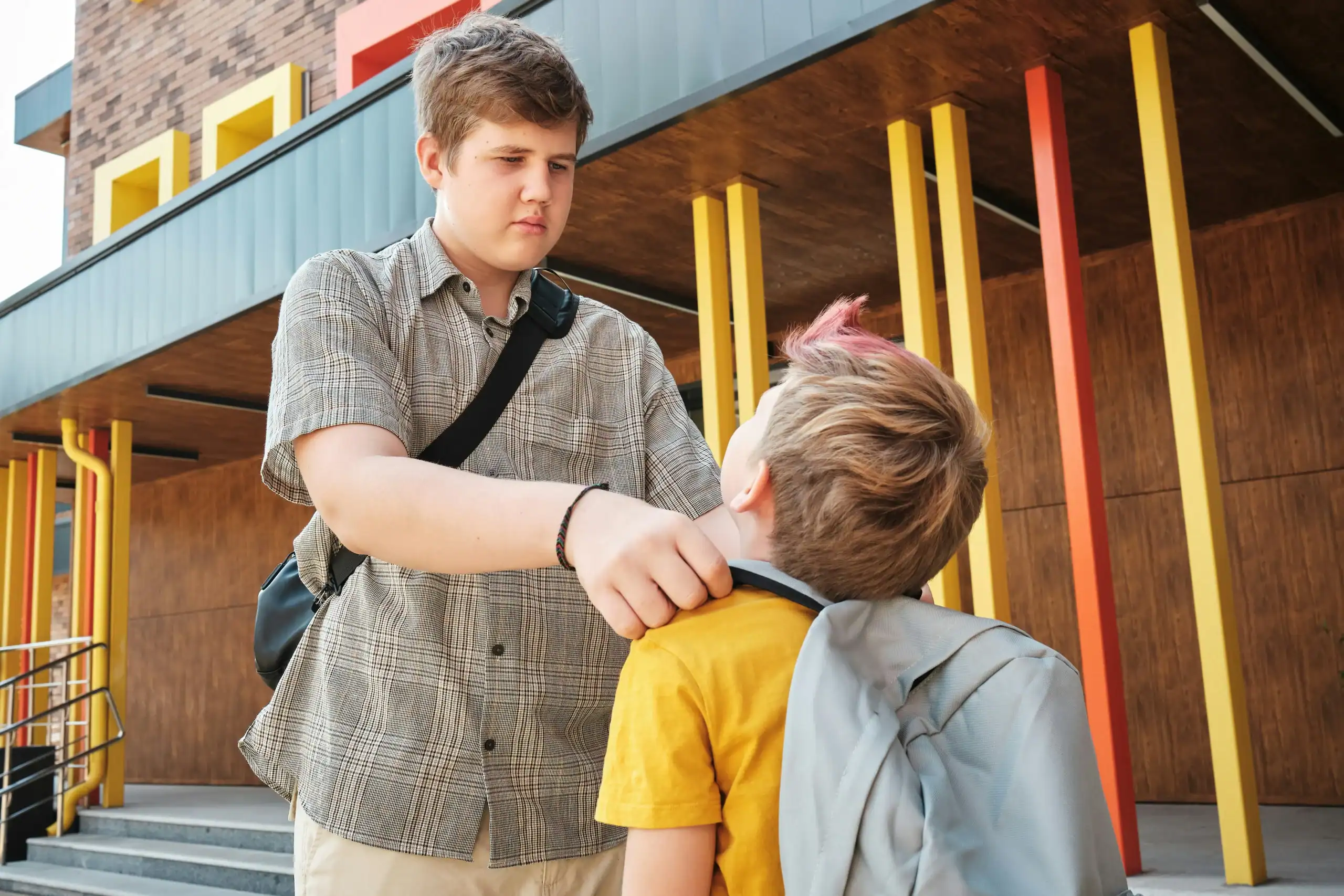Bullying is a serious issue that affects a child’s emotional, social, and mental well-being. Bullying victimization among teenagers is significant; 44.4% of teens with developmental disabilities experienced bullying between July 2021 and December 2023, compared to 31.3% without such disabilities.
As parents, knowing how to deal with a bully helps keep your child confident and safe. This guide shares 7 simple and effective strategies that truly work.
Want more real-life tips like this? Join our newsletter, it’s free, helpful, and made for parents like you.
Table of contents:
- Understanding Bullying at Every Age
- 7 Practical Ways on How to Deal With a Bully
- Name the Behavior Clearly
- Use Assertive Communication
- Document Every Incident
- Build a Circle of Support
- Educate Others About Disabilities & Special Needs
- Practice Self-Care and Resilience
- Seek Professional Help if Needed
- How Bullying Impacts Your Wellbeing
- Find Support With The Autism Voyage!

Understanding Bullying at Every Age
Bullying happens at every age, and it looks different as kids grow. Young children may face name calling or exclusion, while teens often deal with cyber bullying or peer pressure. Even young adults can experience subtle forms of bullying. Knowing how to deal with bullies starts with understanding these changes.
Childhood, Teen, and Adult Bullying Defined
Bullying looks different as kids grow up. Young children may tease, hit, or leave others out. Teens often use gossip, rumors, or online posts to hurt others. Adults might bully by being controlling, overly critical, or using power unfairly.
Why Bullying Happens
Knowing the signs of bullying helps you understand what’s happening with your child. Some kids bully to feel in control, fit in, or hide pain. It can be a way to cover hurt, not to be mean. Understanding why helps you respond with support, not just discipline.
Recognizing the Different Types of Bullying
Signs of bullying at school aren't just physical. Verbal teasing, exclusion, and online harassment can hurt just as much. These behaviors are often missed but can affect your child’s well-being. Spotting signs early helps you support and protect your child.

7 Practical Ways on How to Deal With a Bully
Knowing how to deal with bullies starts with clear, confident steps your child can use every day. Bullies often pick on kids who seem unsure or alone, so practicing simple strategies can make a big difference. From using strong words to building support, these tools help your child feel more in control.
Parents can learn more about real-life strategies and insightful resources by visiting Blogs for Special Needs Families.
1. Name the Behavior Clearly
When your child asks, “How do I deal with a bully?”, help them name the behavior clearly and with confidence. They can say, “That’s mean,” or “You’re hurting me,” so the bully knows it’s not okay. This helps others take it seriously and step in. It also shows strength without yelling, fear, or fighting.
2. Use Assertive Communication
Learning how to stand up to a bully means teaching your child to speak clearly and firmly. Help them practice using “I” statements, like “I don’t like that,” or “I want you to stop.” These simple phrases let the bully know the behavior isn’t okay. When your child stays calm and confident, it often stops the bullying before it gets worse.
3. Document Every Incident
Standing up to bullies also means keeping track of what happens clearly and consistently. Write down dates, details, and how your child felt after each incident. Save screenshots or messages if the bullying happens online or through social media. This makes it easier to talk to teachers or adults who can step in and help effectively.
4. Build a Circle of Support
The signs of a bully are easier to handle with support from people they trust and feel safe with. Help your child build strong, healthy relationships at school and in the community. Friends, family, and teachers can make a big difference. Feeling supported makes them more confident, secure, and less of a target.

Guide for Writing a Letter of Intent for Families with Special Needs
This guide provides you with essential tips for crafting a Letter of Intent. Perfect for families navigating the complexities of planning for a special needs future.
5. Educate Others About Disabilities & Special Needs
A strong anti bullying strategy for schools is teaching about disabilities. Use kind, simple words when talking to teachers and classmates to build empathy. This builds understanding and support for your child. It also encourages awareness, kindness, and respectful communication that promote inclusion and safety.
Resources like IEP for autism helps others understand and support your child.
6. Practice Self-Care and Resilience
Standing up to bullies can be tough, so remind your child (and yourself) to rest and recharge. Talk about feelings, do calming activities, and take breaks when needed. Resilience grows when kids feel cared for. These small steps also help your child learn how to deal with bullying in healthy ways.
7. Seek Professional Help if Needed
Dealing with bullying sometimes means getting help from counselors, school staff, or therapists. If bullying affects your child’s mental health, don’t wait to act. Reaching out shows strength and gives your child tools to cope and heal. Early support can prevent stress, anxiety, or school struggles.

How Bullying Impacts Your Wellbeing
Bullying affects not just your child but you as a parent too. It can bring stress, worry, and sleepless nights, especially when you feel unsure of what to do next. You may wonder, “How do you deal with bullies when it’s hurting my family?” Caring for your mental wellbeing through rest or support helps you stay strong for your child.
Find Support With The Autism Voyage!
You don’t have to face dealing with bullying alone; support is here. The Autism Voyage offers tips, resources, and support to help your family through tough moments. Whether you're looking for guidance, tools, or support, we’re here to help. Every family deserves a space to ask questions, share, and find hope.
Reach out anytime through our Contact page to explore some of our personalized financial strategies for your family.
Key Takeaway:
- Start With Clear, Simple Steps
Teach your child to name the behavior and speak calmly. This builds confidence and helps them respond without fear. Learning how to deal with bullying starts with simple words. - Create a Support System
Kids need friends, family, and trusted adults around them. Support makes bullying easier to spot and handle. Your child feels safer when they’re not alone. - Ask for Help When Needed
If bullying affects your child’s mood or behavior, seek help. Counselors and teachers can offer tools that work. Teach your child how to deal with bullying by staying calm, speaking up, and walking away when needed. You don’t have to handle it all alone.
